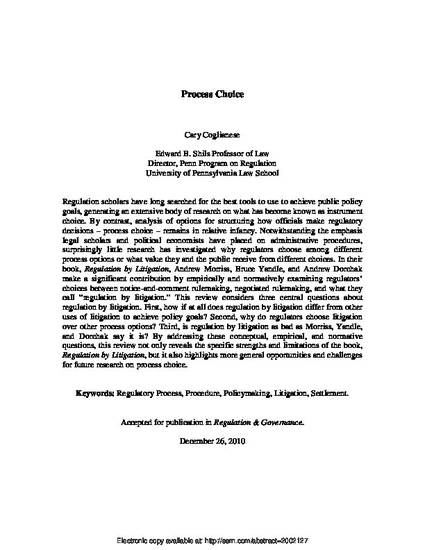
Regulation scholars have long searched for the best tools to use to achieve public policy goals, generating an extensive body of research on what has become known as instrument choice. By contrast, analysis of options for structuring how officials make regulatory decisions – process choice – remains in relative infancy. Notwithstanding the emphasis legal scholars and political economists have placed on administrative procedures, surprisingly little research has investigated why regulators choose among different process options or what value they and the public receive from different choices. In their book, Regulation by Litigation, Andrew Morriss, Bruce Yandle, and Andrew Dorchak make a significant contribution by empirically and normatively examining regulators’ choices between notice-and-comment rulemaking, negotiated rulemaking, and what they call 'regulation by litigation.' This review considers three central questions about regulation by litigation. First, how if at all does regulation by litigation differ from other uses of litigation to achieve policy goals? Second, why do regulators choose litigation over other process options? Third, is regulation by litigation as bad as Morriss, Yandle, and Dorchak say it is? By addressing these conceptual, empirical, and normative questions, this review not only reveals the specific strengths and limitations of the book, Regulation by Litigation, but it also highlights more general opportunities and challenges for future research on process choice.
- regulatory process,
- procedure,
- policymaking,
- litigation,
- settlement,
- instrument choice
Available at: http://works.bepress.com/cary-coglianese/55/

5 Reg. & Governance 250 (2011)